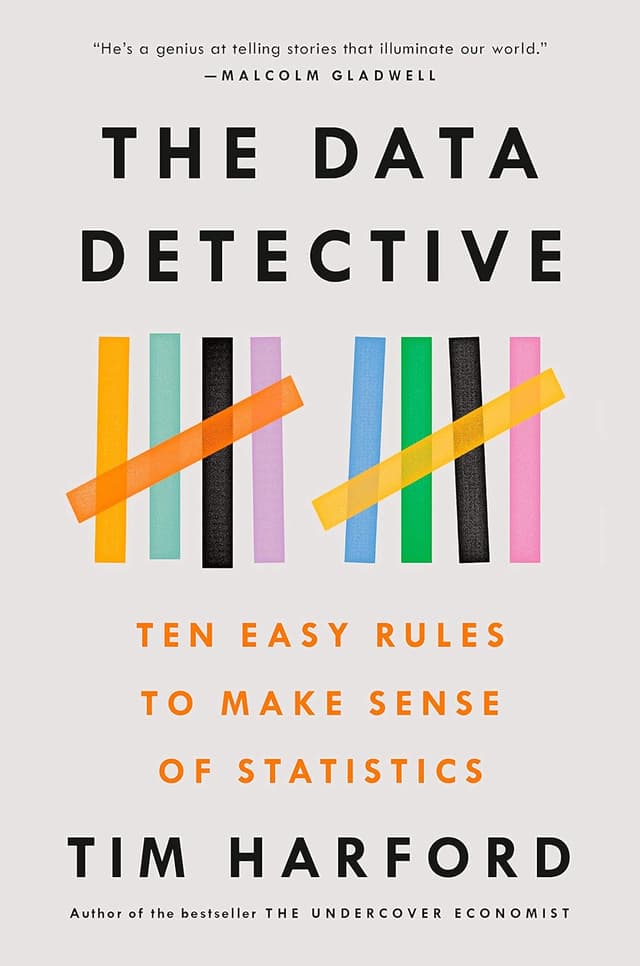Noah Brier | February 8, 2022
The Media Timescale Edition
On the structure of news, pace layers, and the fifty-year newspaper
Recommended Products

A new book by Tim Harford featuring a thought experiment about a fifty-year newspaper.
Noah here. There’s a simple thought experiment in Tim Harford’s new book The Data Detective that’s been stuck in my head since I read it: a fifty-year newspaper. He didn’t invent the idea, it came from Max Roser of Our World In Data, who was in turn inspired by a 1965 paper by John Galtung and Mari Holmboe Ruge, two Norwegian social scientists. Lots of pixels have been devoted to the inability of most media to track slow-moving stories (I even worked on a project for a large news organization on the topic during my agency days), but something about the fifty-year newspaper refocused the question for me. Here’s how Roser described the idea in a 2016 Washington Post piece:
In a classic essay from 1965, Johan Galtung analyzed the structure of news. He argued that the frequency with which outlets publish — daily, and now instantly — limits their ability to cover long-term positive trends. Imagine if newspapers did not come out every day but instead once every half-century. They likely wouldn’t report on half a century of gossip about celebrities and politicians. Instead, they’d focus on major global changes since the last edition. In a 50-year newspaper, the fact that global child mortality has fallen from 17 percent to 4 percent would make the front page.
Why is this interesting?
Every year I teach a weekend seminar at the University of Montana and so I spent Saturday standing in front of a classroom talking about technology, media, mental models, and ideas. One part of the discussion was on how to maintain a healthy information diet, and while I covered the importance of a diversity of topics, viewpoints, and backgrounds, I also spoke about the importance of consuming across a variety of timescales.
The image is obviously illustrative and not exhaustive, but the point is that I find it helpful to work across these different dimensions. Twitter/streams are great if you are willing/able to put in the work to find the right people to follow and I’ve found that at various moments in my life having a great Twitter list was truly like being tapped into a hive brain. But analysis it’s not. And for that, I turn elsewhere. Over the years I’ve tried to focus my attention in this area more towards the slow stuff, even trying not to read too many new books that hadn’t yet had the time to settle. That’s not to say I leave out the middle, though I do tend to focus my time on the slower-moving weekly/monthly over the hourly or daily rhythm of newspapers and television. Even something like WITI, you could argue, is on the slow side of medium-speed media, as we don’t care much about being pegged to any particular piece of news.
Harford, who has a Financial Times column (a WITI favorite) and BBC show called “More or Less” (both weekly) also tends away from the fast-middle:
I often find that my Saturday Financial Times column is unmoored from the news of the week. I'm just not very interested in producing a hot take on recent news; I find my interest far more engaged by topics that have occurred to me after reading books or academic papers or just musing about life. And while I enjoy the way that fans of More or Less often compare it favorably to rolling radio and TV news, I sometimes feel that we're getting credit for something that comes naturally: we operate at a different rhythm from that of the rolling news. As a weekly program we usually have a couple of days to chew over something that has been said—or missed—in the blur of a live interview. Often, we find ourselves pondering a topic for weeks or months. Why cover a story quickly when you can explore it properly? And we don't usually have to worry about being scooped because we're far too nerdy for anyone else to care about our stories.
From there he goes on to conclude, “Daily news always seems more informative than rolling news; weekly news is typically more informative than daily news. A book is often better still.” Next time you read the newspaper ask yourself whether that headline would make the one-year, five-year, twenty-five-year, or fifty-year newspaper. (NRB)
--
WITI x McKinsey:
An ongoing partnership where we highlight interesting McKinsey research, writing, and data.
The net-zero transition. Governments and companies worldwide are pledging to achieve net-zero emissions of greenhouse gases. What would it take to fulfill that ambition? From the six key features of the economic transformation to actions stakeholders can take, you don’t want to miss this important research.
—
Thanks for reading,
Noah (NRB) & Colin (CJN)
Why is this interesting? is a daily email from Noah Brier & Colin Nagy (and friends!) about interesting things. If you’ve enjoyed this edition, please consider forwarding it to a friend. If you’re reading it for the first time, consider subscribing (it’s free!).

